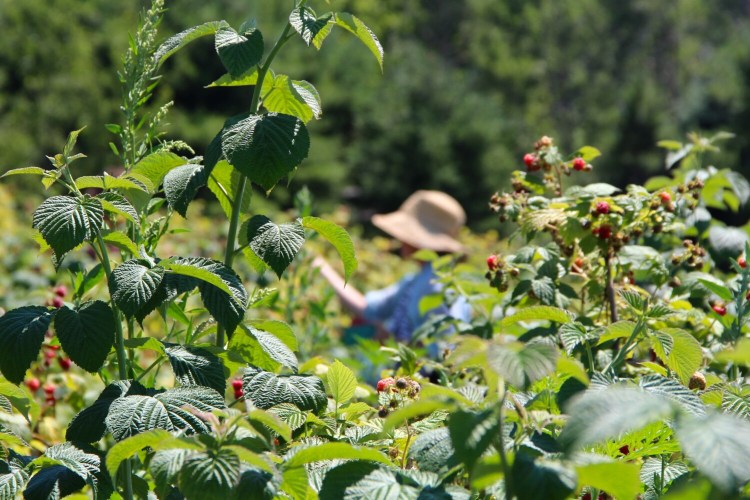We are in the middle of raspberry picking. Of the fruits we grow, these are my favorite – both for their flavor and because they are simple to grow.
We planted our bed about 40 years ago, and while it needs to be weeded and the canes that produced fruit removed every fall, growing raspberries is fairly simple. Heck, they can be found growing in the wild.
Raspberries divide into two basic types: The standard type puts up canes one year that produce no fruit. Those canes produce fruit in their second year, while the roots send up new first year canes.
Everbearing raspberries are the other type. They produce raspberries first on second-year canes and then, in the fall, on first-year canes. I don’t like them because pruning at the end of the season is more complicated and because spotted wing drosophila, a type of fruit fly, shows up right about when the second crop is ripening.
The other major pest is Japanese beetles. They showed up in Maine about 15 years after we planted our bed and were awful for the subsequent 15 years. The state’s Department of Agriculture released a tachnid fly that kills Japanese beetles – you see the eggs as white dots on the beetles’ backs – that kept them in control for about a decade. But for some reason, the beetles are back this year. I kill the beetles by knocking them into a container of soapy water, which takes time. I try to let the ones with tachnid-fly eggs live. Still, I hope the beetles’ return is a one-year aberration.
Another thing good about raspberries is that they are easy to freeze. Remove any leaves or insects, put the berries in a plastic ice cream container and put the container in the freezer. On a dark, cold winter day when you are longing for summer, they will be perfect to cook.
Send questions/comments to the editors.



Success. Please wait for the page to reload. If the page does not reload within 5 seconds, please refresh the page.
Enter your email and password to access comments.
Hi, to comment on stories you must . This profile is in addition to your subscription and website login.
Already have a commenting profile? .
Invalid username/password.
Please check your email to confirm and complete your registration.
Only subscribers are eligible to post comments. Please subscribe or login first for digital access. Here’s why.
Use the form below to reset your password. When you've submitted your account email, we will send an email with a reset code.